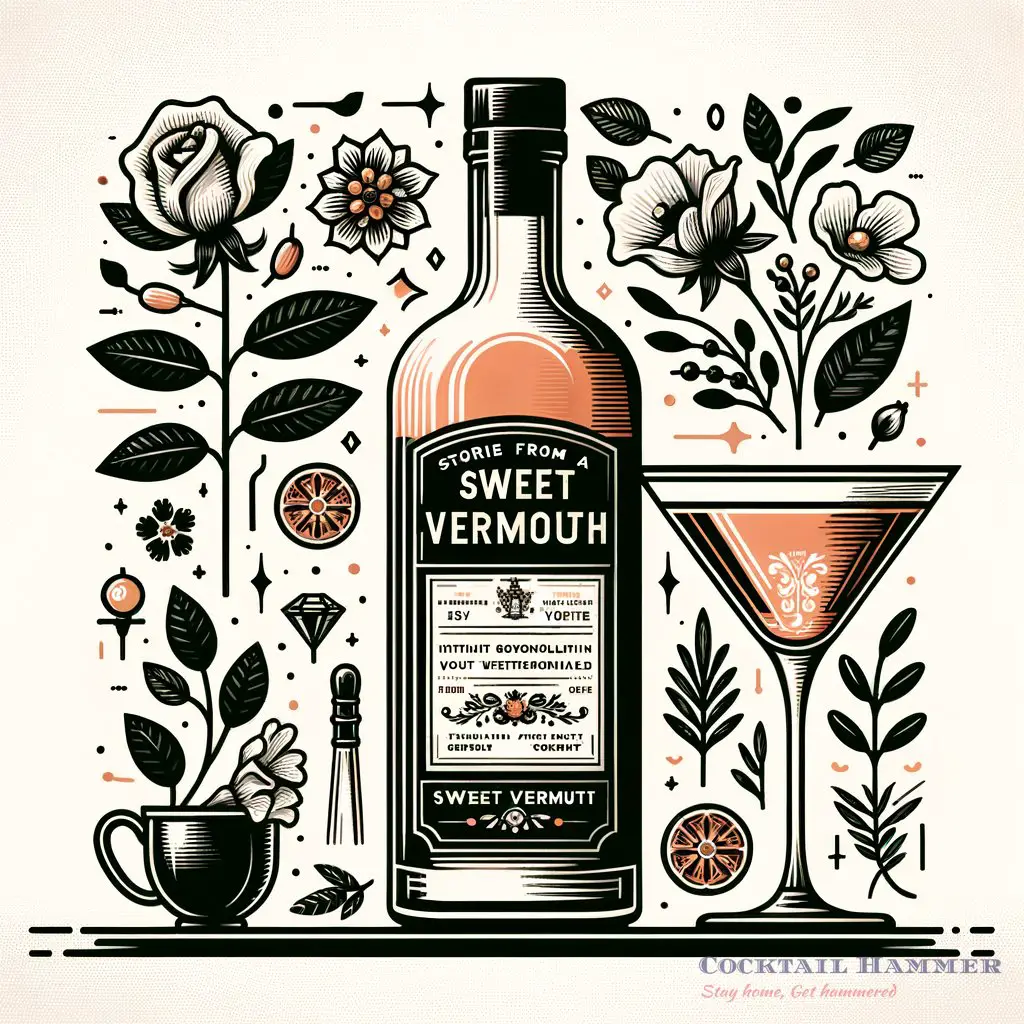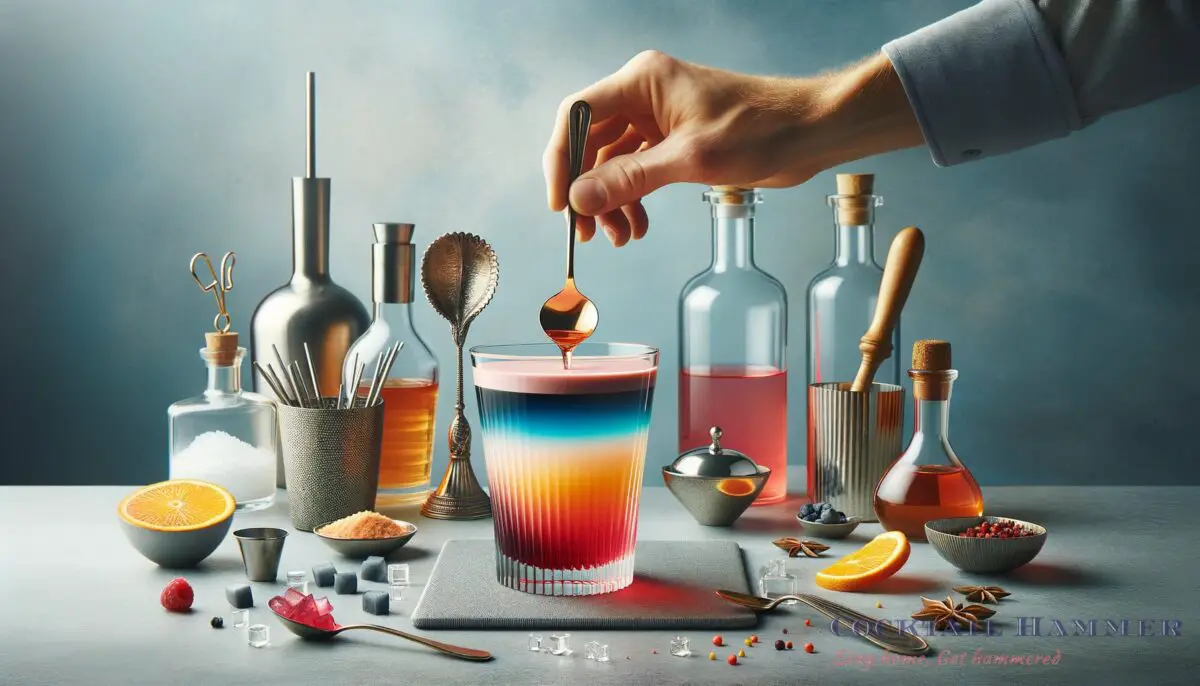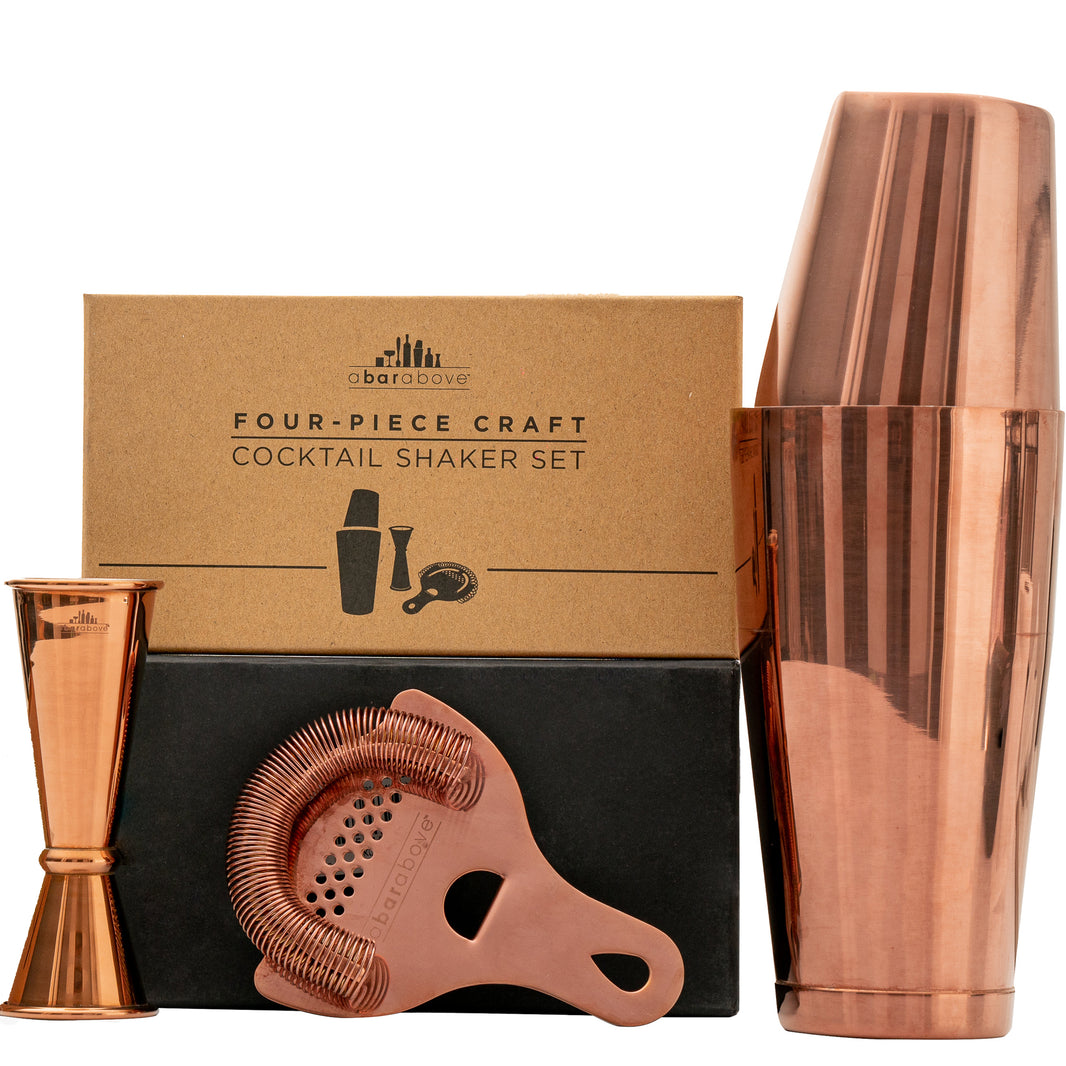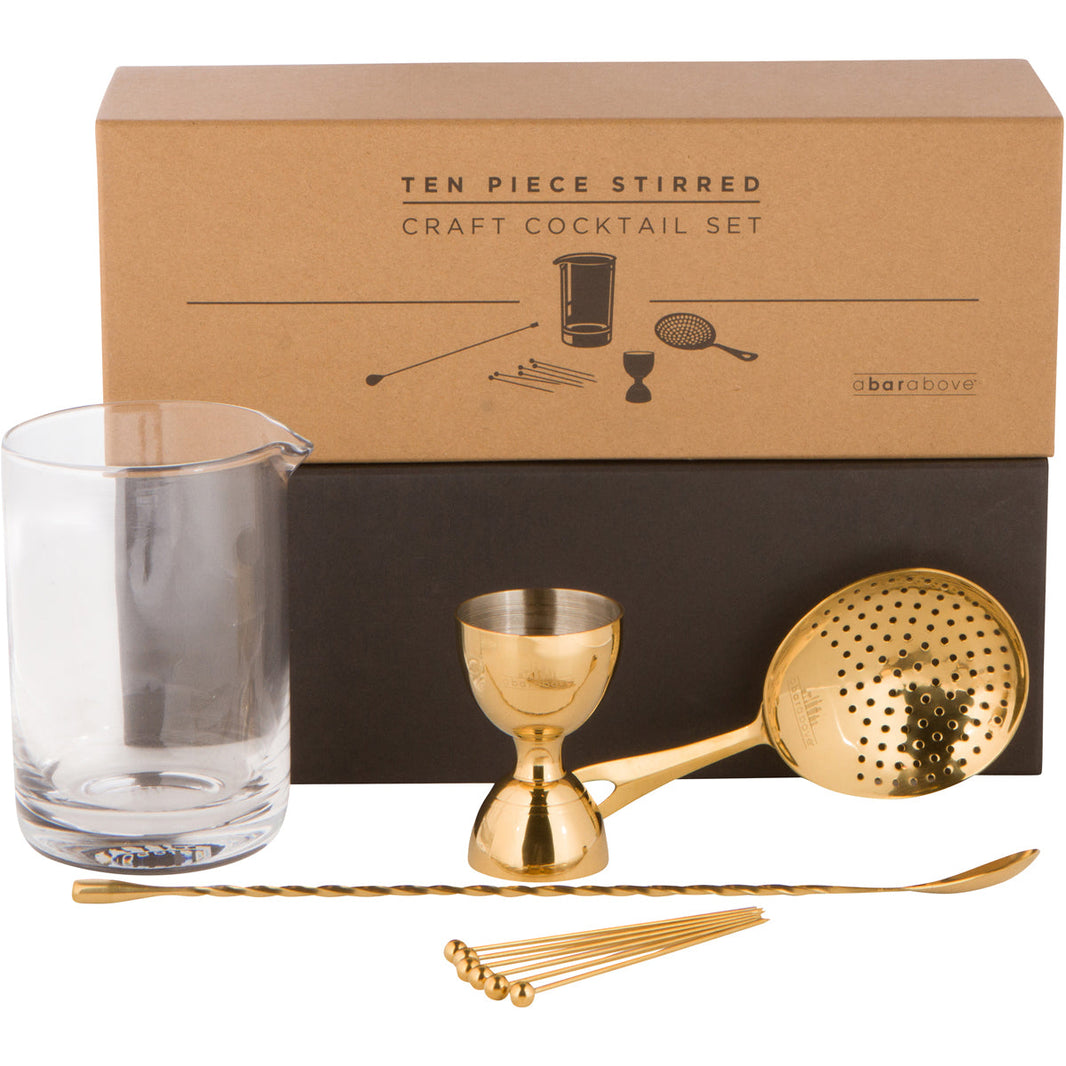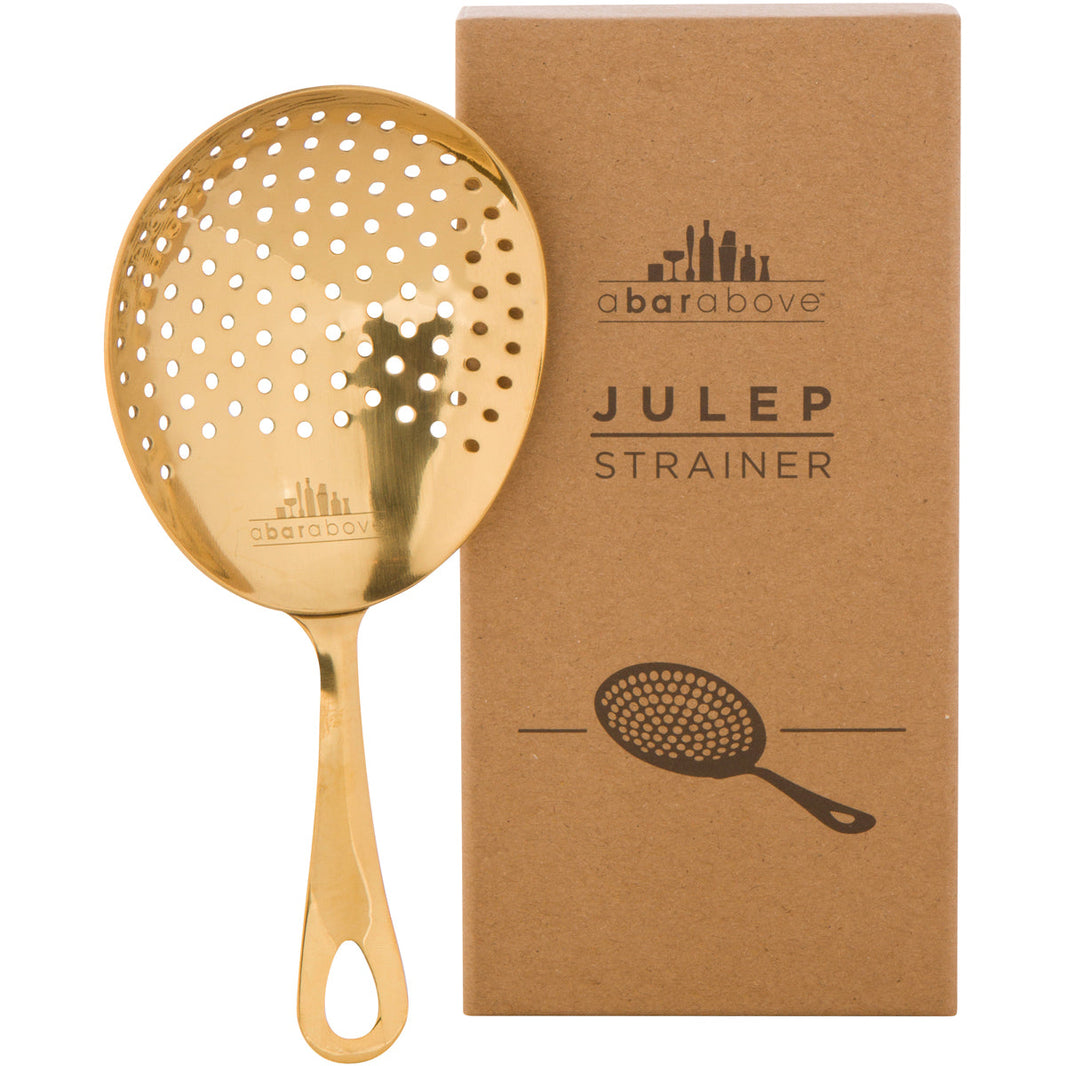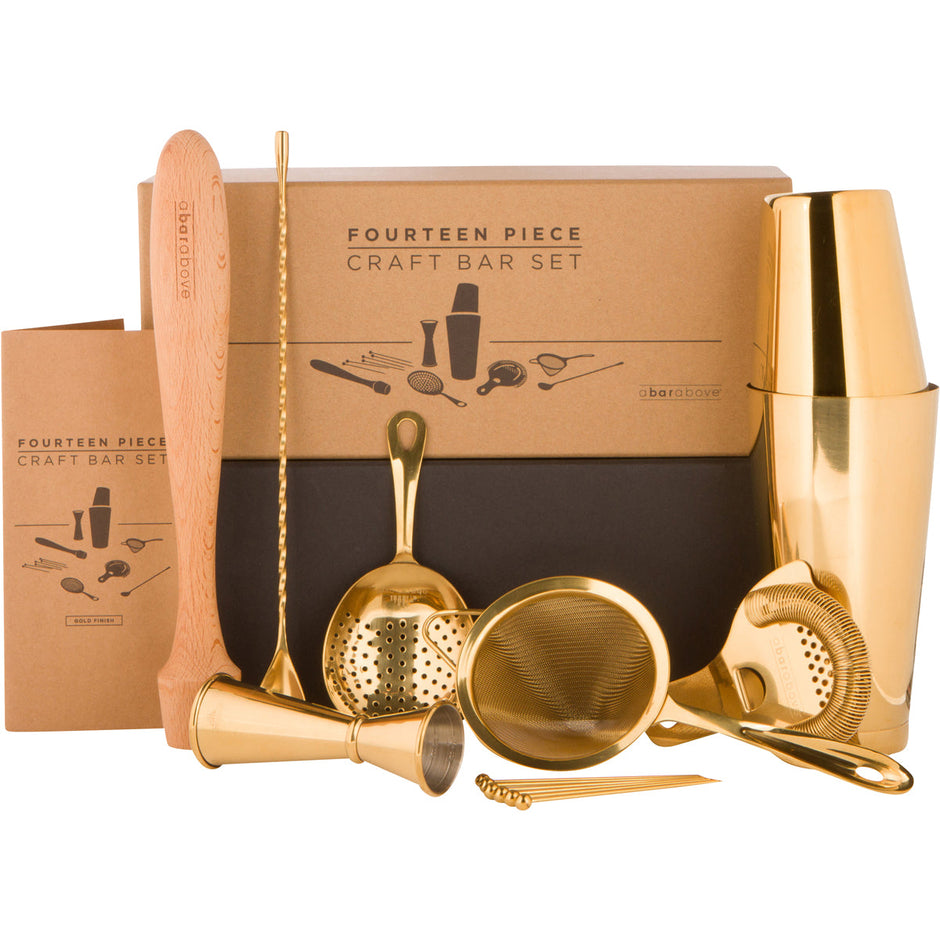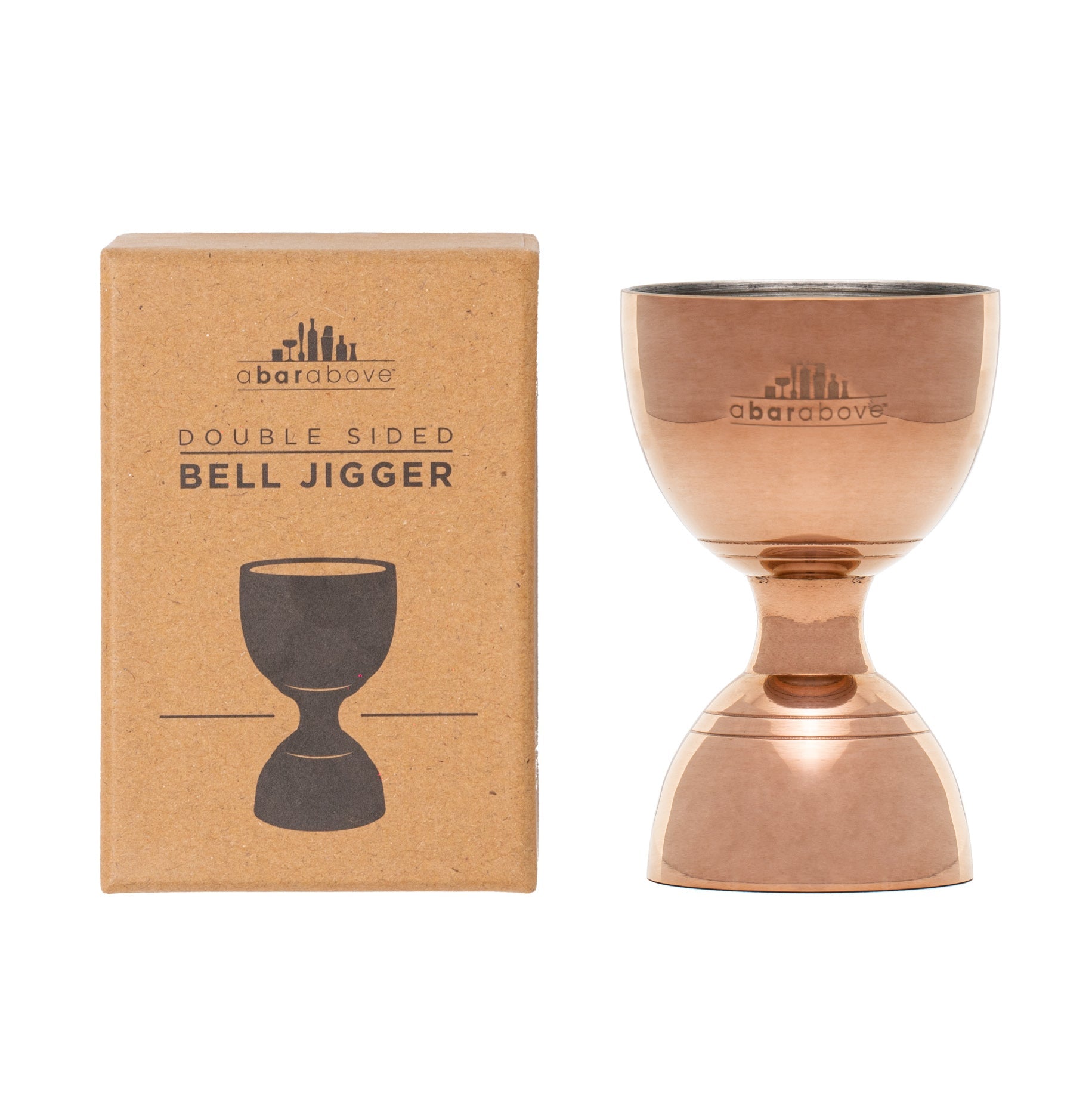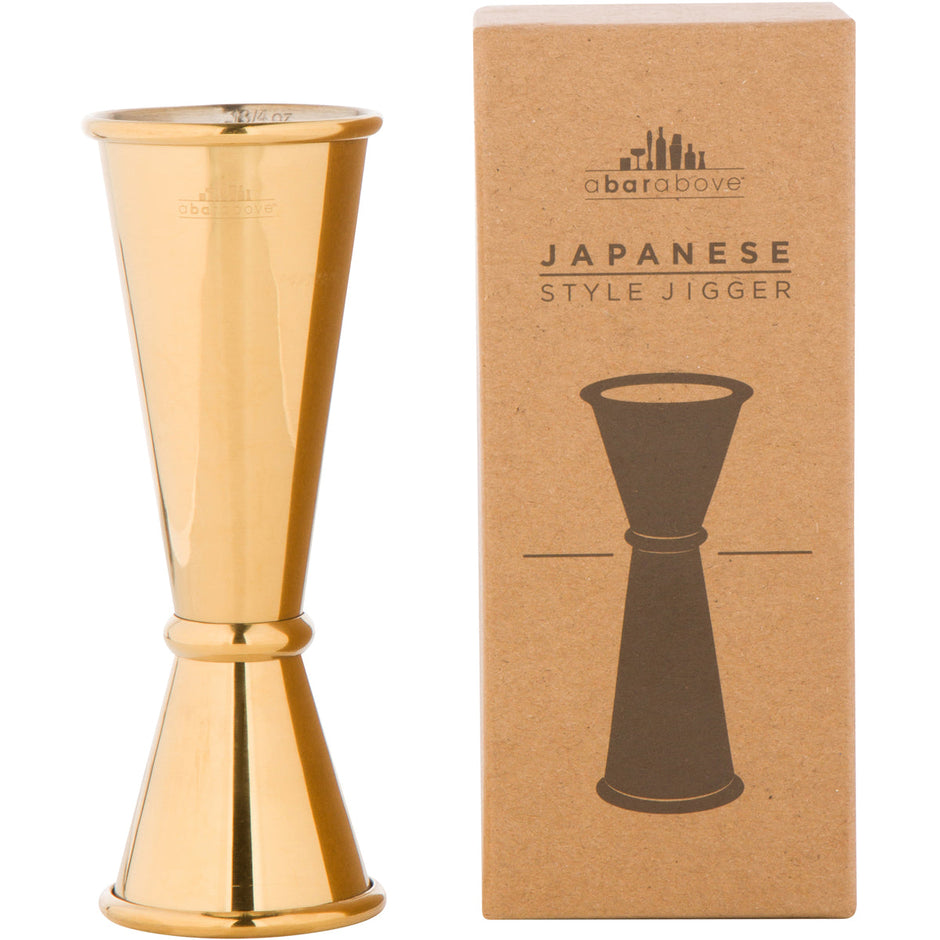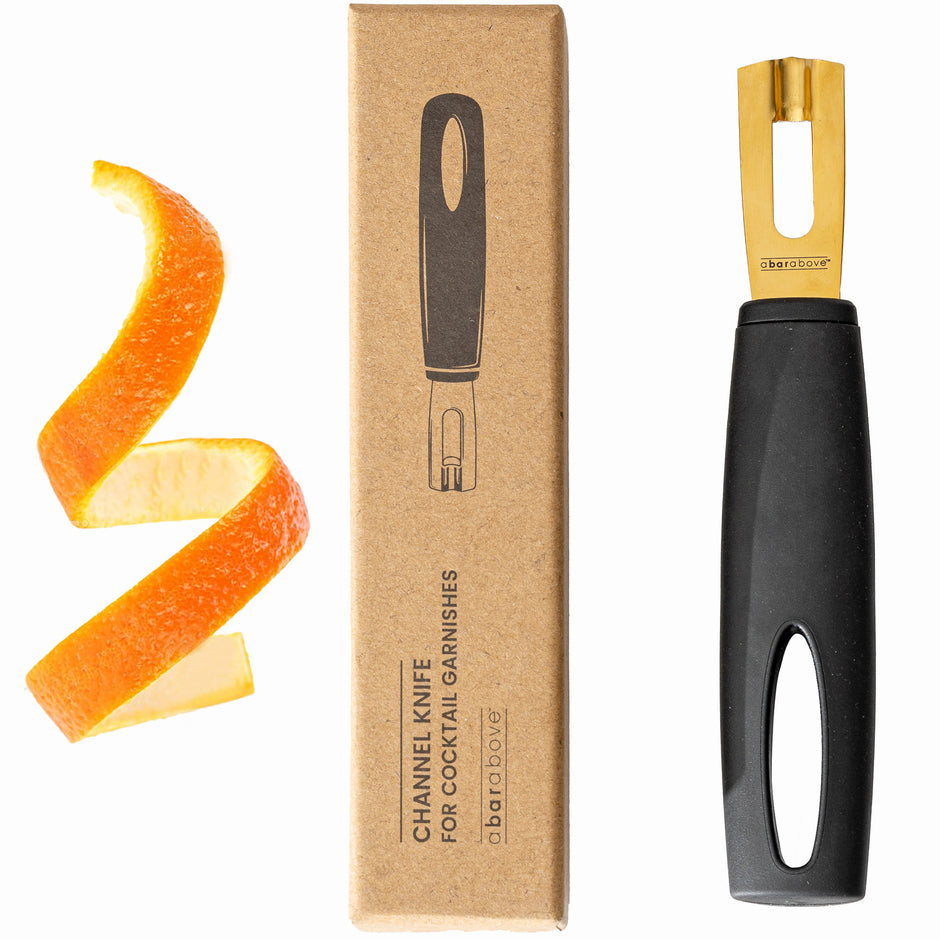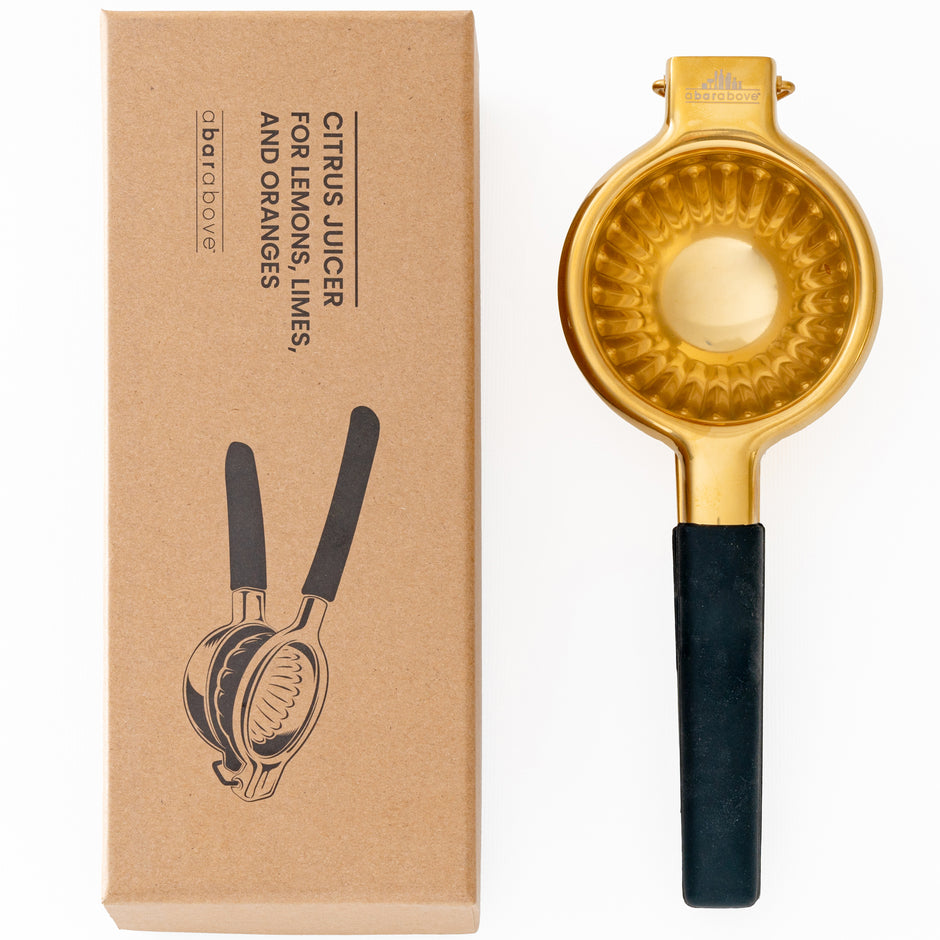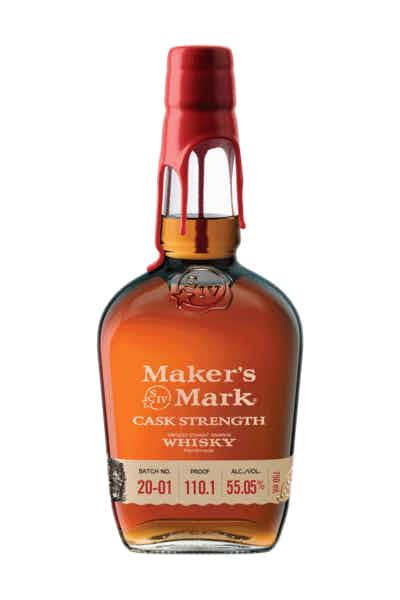Ever noticed how a sip of a well-crafted Manhattan can spark as much debate as a clash over the best tools every home bartender needs? When it comes to what is sweet vermouth, passions run high. We’ll dive into its velvety secrets and blend myth with reality.
Key takeaways
- Sweet vermouth is a fortified and aromatized wine, essential for classic cocktails.
- It brings a balance of sweetness to drinks, contrasting with bitter or sour elements.
- Proper storage in the fridge is key once the bottle is opened.
- Exploring different brands and recipes can broaden your mixology skills.
Diving into the essence of sweet vermouth
Think of this velvety elixir as the cornerstone of classic mixology – a potion that whispers tales of bygone eras through every stirred cocktail. With a nod to tradition and a zest for the present, our numbered guide peels back the layers of sweet vermouth and reveals why your home bar longs for it.
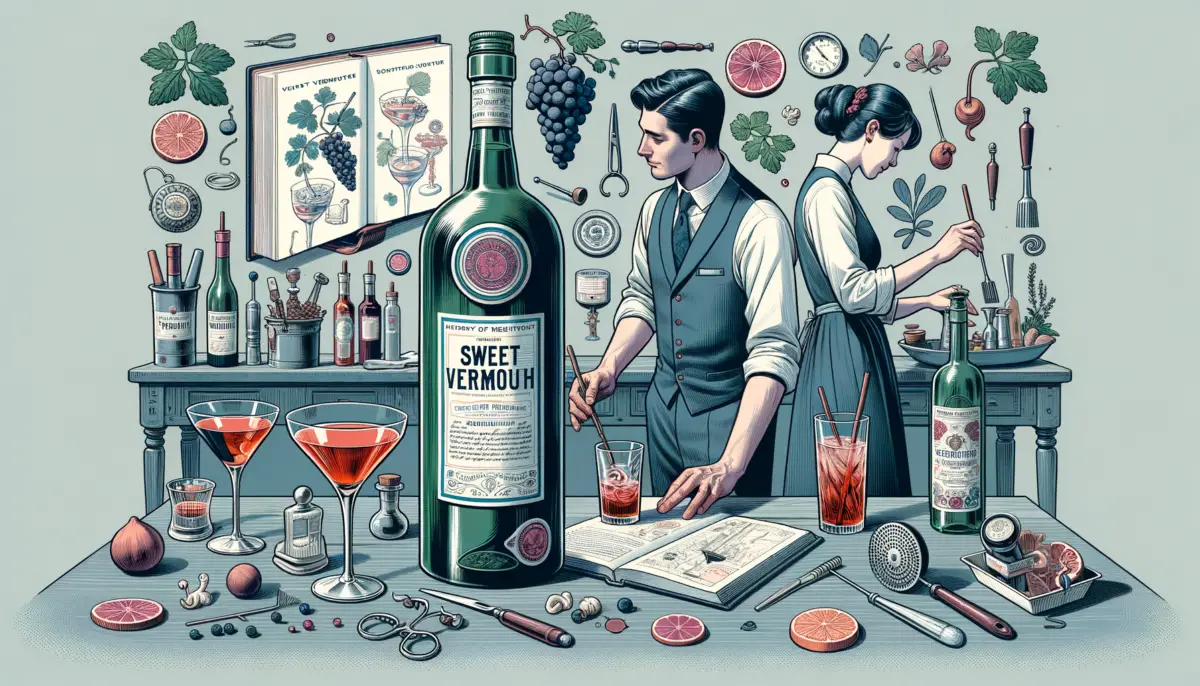
1. The definition and history
Sweet vermouth, known in the hush of speakeasies and the clink of ice as the sweeter cousin in the vermouth family, is a fortified wine. This means it’s a grape wine given more spirit – both in alcohol and character – with a kick of brandy. Why’s this sensual brew in the roster?
It’s the yin to your cocktail’s yang, the balance to the bitter, an aromatic wonder dating back to 18th-century Turin, Italy, where it first colored the lips of Italian nobility.
It’s not just wine with a higher ABV; it’s a concoction steeped in herbs, spices, and botanicals, a nod to ancient medical elixirs. The aromatic profile ranges from cinnamon warmth to the zing of citrus peel, each bottle a story of its maker’s whims. To truly appreciate sweet vermouth, visit the page that explains the alchemy behind what is vermouth and learn why mixologists revere it.
2. Sweet versus dry
Now, not all vermouths are woven from the same vineyard dreams; there’s a kin that resides in the shadow of sweet, and that’s dry vermouth. The distinction here isn’t just sugar under a magnifying glass; it’s a profile built on contrasts. Think of sweet vermouth as the majestic skyline at sundown, while dry is the crisp morning air – each breathtaking, each essential in their own right.
Sweet vermouth, with its luscious viscosity and whisper of caramel kisses, is the heart in drinks like the Negroni or the Americano. It cozies up with bourbon or rye in a Manhattan, and some might even entertain it neat with a twist, showcasing its herbal ballet. Interested in mixing the two?
Study the dichotomy between vermouth types with a guide to balancing cocktail flavors.
3. How to use it in cocktails
Sweet vermouth isn’t just a bottle collecting dust on the back bar. It’s an artist’s paint in the grand mural of mixology, crucial for creating cocktails that whisper complexity into the mix.
Even the greenest barkeep knows that sweet vermouth isn’t just a bottle collecting dust on the back bar. It’s an artist’s paint in the grand mural of mixology. This syrupy nectar brings depth and complexity to the table, where other ingredients merely flirt with your taste buds.
Employing sweet vermouth in a cocktail calls for a pour that’s as measured as a maestro’s baton. From the velvety tendrils in a Boulevardier to the bold strokes in a Rob Roy, it’s all about harmony. For those stirred by the art of cocktail creation, dive into recipes that showcase sweet vermouth’s versatility with adventures like extreme environment-inspired cocktails and see how it whispers complexity into the mix.
More sweet vermouth exploration tips
Expanding your horizons in the world of sweet vermouth isn’t just a game of sip and tell; it’s an odyssey to be savored, a journey of aromatic layers and flavor profiles waiting to be unravelled. With each tasting and toast, your palate becomes wiser, and your cellar, all the richer.
- Experiment with different brands to find your favorite one.
- Store open bottles in the fridge to prolong their shelf life.
- Try using it in cooking to add a depth of flavor.
- Attend a vermouth tasting event to learn from the experts.
- Make your own blend of vermouth with herbs and spices for a personal touch.
Before diving glass-first into the art of vermouth, let’s talk taboos and triumphs. To avoid a mixology misstep, keep these pointers at heart and your vermouth at hand.
| Do | Don’t |
|---|---|
| Do keep it fresh by storing properly. | Don’t let it sit out; it oxidizes. |
| Do measure your pours for balance. | Don’t eyeball amounts in cocktails. |
| Do pair with the right spirits. | Don’t overpower delicate spirits. |
| Do introduce vermouth gradually. | Don’t flood a drink; it’s potent stuff. |
Segregate sweet vermouth like a pro mixologist: fresh and balanced.
Advantages and disadvantages of using sweet vermouth
Whether sipped, stirred, or showcased, sweet vermouth slips into the scene with the graceful ease of a seasoned socialite. But like any character with depth, it dances on a line between charm and challenge.
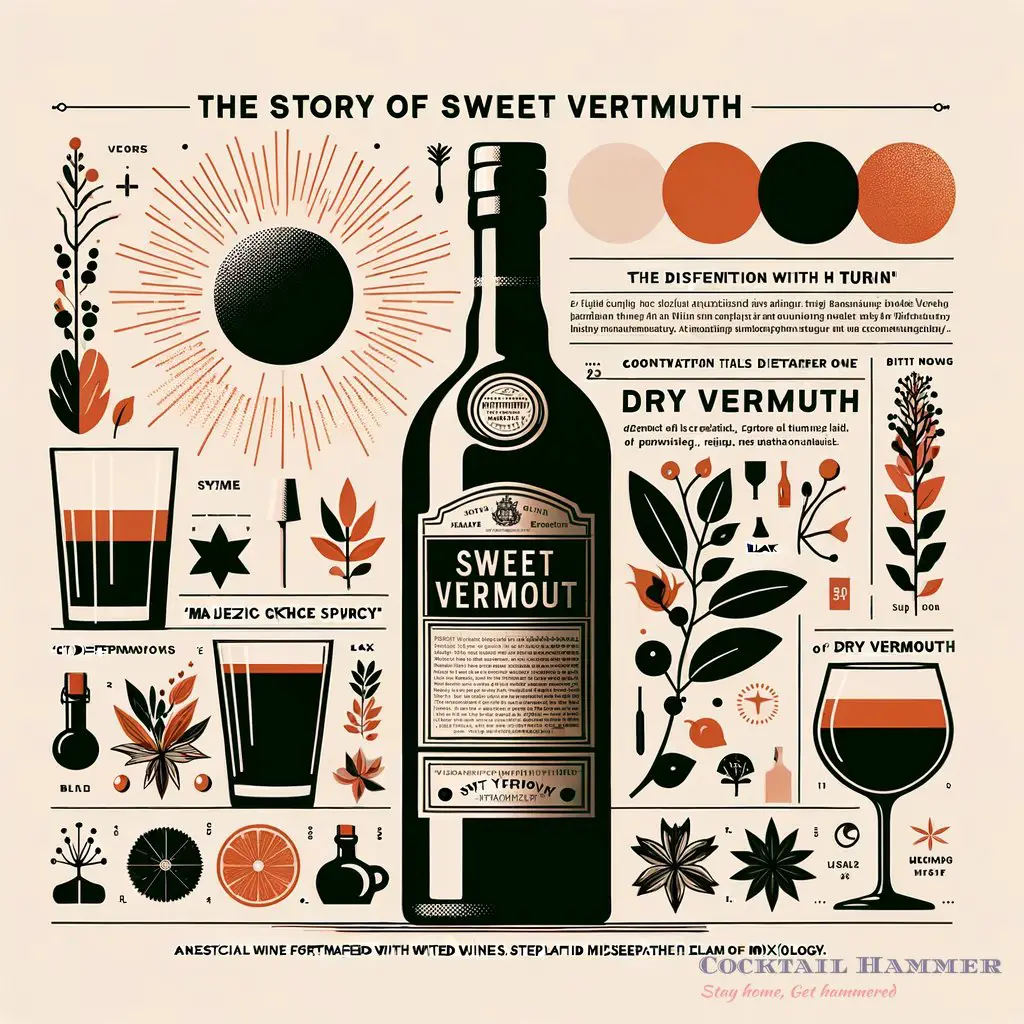
Advantages
- Enhances cocktails with its complex flavor profile.
- Versatile in a range of drinks from aperitifs to digestifs.
- Can be enjoyed on its own as a sophisticated sipper.
- Adds a sweet balance to counteract bitter or acidic components.
- Long shelf life when stored properly.
Disadvantages
- Can overwhelm a drink if not used judiciously.
- Once opened, shelf life is limited compared to spirits.
- Poor storage can lead to rapid degradation of flavor.
- Not all brands suit all palates; it’s a personal taste journey.
- Requires refrigeration once opened, which might be inconvenient.
As someone who’s still getting their shaker arm in shape, I’ve got to say, my experiments with sweet vermouth have been eye-opening – and palate-educating. It’s a wild card that plays well with so many spirits. I’m no expert, but mixing with sweet vermouth feels like unlocking a secret level in a video game where suddenly, you’ve got new powers.
I recommend you mix up a storm and share your exploits. Check out these bold and daring cocktails that you could be whipping up with a bottle of sweet vermouth at your bar cart.
If you are a visual learner, check out this video titled ‘5 Excellent sweet vermouth cocktails that aren’t a manhattan!’
Frequently asked questions (FAQ)
Is sweet vermouth a good addition to any cocktail?
Sweet vermouth can be a fantastic addition to many cocktails, injecting them with rich, herbaceous notes. However, it’s not a one-size-fits-all; some drink recipes may call for a different type or omit it altogether, depending on the flavor profile you’re aiming for. The key is to use it where it can play its role without overshadowing other ingredients.
How long can I keep an opened bottle?
Once you pop the cork on sweet vermouth, it will remain in good form for about a month if stored properly in the fridge. Like wine, it oxidizes, so it’s best used while fresh to preserve its charismatic flavors. Think of it like that leftover pizza – better when not left to the merciless hands of time.
Can sweet vermouth be used in non-alcoholic drinks?
Absolutely, sweet vermouth can add a layer of complexity to non-alcoholic drinks as well. However, since vermouth is wine-based with added alcohol, those avoiding alcohol would need to find a non-alcoholic vermouth alternative. Dive into the world of non-alcoholic spirits to explore such adventurous concoctions.
Final thoughts
As we pull up from our deep dive into the world of sweet vermouth, it’s clear that this fortified wine is more than just a cocktail ingredient— it’s a tradition, a story, and an art form itself. So next time you find yourself deciphering a drink menu or swirling a glass at your home bar, remember that adding a dash of sweet vermouth might just be the secret handshake into a world of richer, more complex cocktails.
What’s your go-to cocktail with sweet vermouth? Did I cover everything you wanted to know? Let me know in the comments section belowI read and reply to every comment. If you found this article helpful, share it with a friend, and check out my full blog for more tips and tricks on becoming a swank home bartender. Thanks for reading, and here’s to mixing, sipping, and savoring life one sweet vermouth cocktail at a time!
